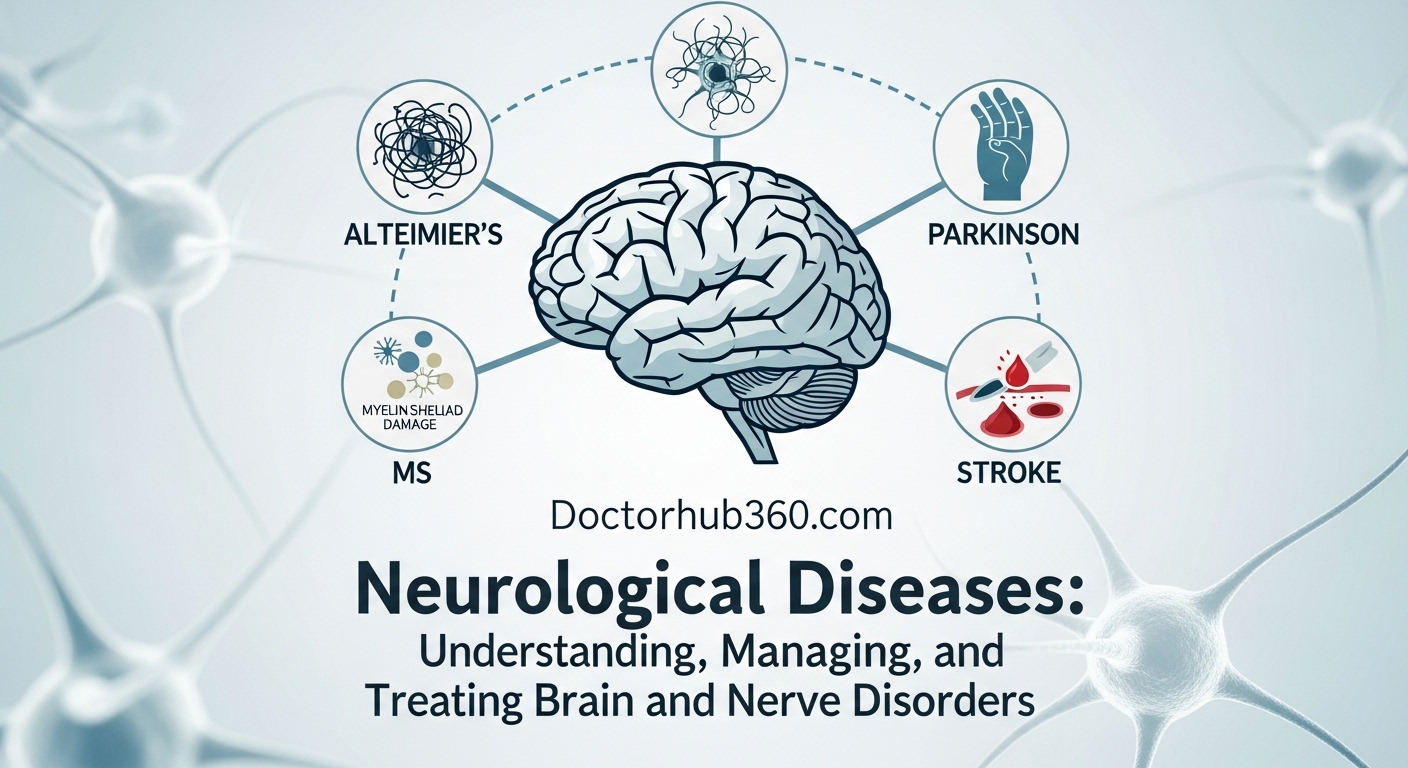Health & Fitness
Embracing the World of Golf: Tips and Benefits for Enthusiasts

For ages, golf has fascinated players and fans, providing a distinctive mix of tactics, accuracy, and tranquility. The sport appeals to beginners and seasoned athletes with its wide-open fairways, lush greens, and the quiet challenge of mastering each hole. The calm atmosphere contrasted with competitive play creates a captivating balance that makes golf more than just a pastime—it becomes a lifelong passion. Many find the escape into nature and the time spent with friends or alone to be as rewarding as the game.
Whether it’s the satisfying rhythm of a perfect swing or the mental focus required to read a green, it’s easy to see why golfing draws people in with its complexity and charm. It’s a sport that invites reflection, demands skill, and rewards patience. From the satisfying sound of a clean hit to the quiet satisfaction of a well-played round, each moment offers a new experience. Over time, the game becomes a personal journey of growth and resilience, challenging both body and mind.
Physical Benefits of Golfing
Engaging in golf is an excellent way to improve physical health and overall fitness. The sport encourages players to walk an average of six miles during an 18-hole game, depending on the course layout, which translates to a significant cardiovascular workout. Walking, swinging, and carrying clubs contribute to calorie burning and muscle toning, offering a full-body workout that’s easy on the joints. According to Harvard Health, regular participation in golfing activities can substantially reduce the risk of chronic diseases like heart disease, diabetes, and obesity. The low-impact nature of the sport makes it suitable for individuals who may not be able to participate in more strenuous activities, thereby providing a healthy lifestyle option for a broader audience.
Mental Health Boosts from Golf
Golf not only enhances your physical fitness but also improves your mental acuity. The tranquil atmosphere of a golf course serves as an ideal retreat from the stress of everyday life and presents a distinctive backdrop for mindfulness and contemplation. Golf is praised for its mental health benefits, allowing players to reduce stress, enhance concentration, and increase focus. The mental discipline required to strategize each hole and maintain a steady hand during swings supports mental clarity and cognitive stimulation. Many golfers find that the sport offers a meditative experience, wherein the repetitive yet productive nature of the game provides a mental reset that can be carried into daily life, improving overall mood and mental resilience.
Basic Tips to Improve Your Game
For individuals aiming to improve their abilities on the golf course, incorporating some fundamental advice can significantly impact your game. Recognizing and utilizing these techniques can result in better performance, greater enjoyment, and a more profound appreciation for the sport. First and foremost, consistency is key: maintain a uniform swing and perfect your grip to ensure uniformity in your shots. Additionally, familiarizing yourself with the rules and etiquette of the game enriches the golfing experience. Here is a quick bullet list that adds structure to your practice and helps hone your skills:
- Focus on your stance and posture to maintain balance and control during your swing.
- Keep your eye on the ball from addressing it to the follow-through to increase your hit rate accuracy.
- Practice putting regularly to develop a delicate touch and improve green speed comprehension.
- Adopt a pre-shot routine to stabilize performance under varying course conditions and pressures.
Golf as a Social Activity
The social aspect of golf cannot be overlooked, as it is one of the sport’s defining qualities. Beyond individual enjoyment, golf offers a unique platform for social interaction, making it a favorite choice for business networking, community building, and casual gatherings. Unlike many other sports, golf provides ample opportunity for conversation, camaraderie, and shared experiences as players navigate the course. Many lifelong friendships and business partnerships have blossomed on the fairways, proving that golf is a fantastic social connection and networking medium. In addition, golf events often incorporate charity and philanthropic components, allowing participants to contribute positively to their communities while enjoying the game.
The Role of Relaxation and Mindfulness in Golf
Golf provides an excellent opportunity for relaxation and encourages mindfulness, not just on the course but in everyday life. The concentration and focus required to line up a successful shot can translate into improved mental discipline away from the greens. Golf advocates often highlight its calming influence, where the only sounds are the swing of a club and the rustle of leaves, making it an ideal retreat from stress. Moreover, the mental process of strategizing each hole fosters problem-solving skills and adaptability. At the same time, the game’s pace allows players to soak in the natural beauty around them, fostering a sense of well-being and contentment.
Getting Involved in Local Golf Events
Participation in local golf events is a great way to enhance your skills and meet other like-minded individuals. Many communities offer amateur tournaments that welcome players of all experience levels, providing a platform for personal growth and enjoyment. Here’s how to get involved in these enriching experiences:
- Search for local golf clubs or community centers hosting tournaments using online platforms or community bulletin boards for up-to-date information.
- Sign up for events corresponding to your skill level and familiarize yourself with the event rules and regulations to ensure you are ready.
- Attend practice sessions or instructional clinics leading up to the event to hone your skills and strategy.
- Engage with fellow golfers during practice rounds and social events, enhancing the communal experience of the game.
Concluding Thoughts on Golf’s Timeless Appeal
In conclusion, golf is a multifaceted sport that offers numerous benefits, including improvements in physical health and opportunities for socializing. It requires a balance of physical skill and mental agility, making it a fulfilling activity for those who commit to it. As technology advances, innovative equipment enhances the playing experience, increasing the sport’s appeal. Whether you play for personal enjoyment, competition, or professional networking, golf remains a timeless pursuit of well-being and happiness, inviting new players to explore its unique joys.
Health & Fitness
TheHealthyPrimate.org: Redefining Modern Wellness and Mental Health Awareness

In today’s fast-paced world, health and well-being are more important than ever. TheHealthyPrimate.org is an innovative platform that focuses on helping people achieve balance in mind, body, and spirit. With a growing global community, TheHealthyPrimate.org offers tools, resources, and inspiration for individuals who seek to live healthier and more meaningful lives.
The platform combines wellness education, mindfulness training, and motivational guidance to create a sustainable approach to health. Whether you are aiming to reduce stress, improve physical fitness, or enhance emotional resilience, TheHealthyPrimate.org provides valuable insights and practical solutions tailored to your personal growth journey.
What is TheHealthyPrimate.org?
TheHealthyPrimate.org is more than just a wellness website — it’s a holistic initiative created to promote physical vitality, mental clarity, and emotional balance. It focuses on empowering people to take proactive steps toward improving their health and happiness.
The platform provides articles, workshops, and personal development programs that cover a wide range of topics, including nutrition, mindfulness, fitness, and emotional wellness. The goal of TheHealthyPrimate.org is to help users build healthy habits and maintain balance in a stressful modern lifestyle.
| Core Focus | Description |
|---|---|
| Health Education | Guides users on nutrition, exercise, and mindfulness practices |
| Community Support | Connects individuals striving for better health |
| Personal Development | Encourages self-improvement through motivation and positive psychology |
| Holistic Living | Promotes balance between physical, emotional, and mental health |
This balanced approach makes TheHealthyPrimate.org an essential resource for anyone looking to transform their lifestyle.
The Mission and Vision of TheHealthyPrimate.org
The mission of TheHealthyPrimate.org is simple yet powerful — to help people achieve optimal well-being through education, inspiration, and community. The platform envisions a world where everyone has access to reliable information about wellness and mental health.
Its vision revolves around:
-
Promoting mindfulness in everyday life.
-
Reducing the stigma surrounding mental health.
-
Inspiring healthy living through natural and sustainable habits.
-
Empowering people to take control of their emotional and physical health.
Through its mission, TheHealthyPrimate.org encourages individuals to rediscover happiness and live with purpose.
Core Values of TheHealthyPrimate.org
The foundation of TheHealthyPrimate.org rests on a few key principles that define its philosophy:
| Core Value | Explanation |
|---|---|
| Authenticity | Delivering honest and practical wellness advice |
| Inclusivity | Making health information accessible to everyone |
| Empowerment | Helping individuals take charge of their well-being |
| Sustainability | Promoting eco-conscious and long-term lifestyle changes |
These values reflect the commitment of TheHealthyPrimate.org to guide people toward balanced and mindful living.
Programs and Resources on TheHealthyPrimate.org
The resources on TheHealthyPrimate.org are designed to cover every aspect of personal health. From mental resilience to physical performance, it provides structured programs that help users at all stages of their wellness journey.
| Program Category | Focus Area | Benefits |
|---|---|---|
| Mindfulness Training | Meditation, breathing techniques | Reduces stress, increases focus |
| Fitness Challenges | Strength, flexibility, endurance | Builds discipline and energy |
| Nutritional Guidance | Meal plans, superfoods, hydration tips | Boosts immunity and vitality |
| Mental Health Awareness | Stress management, self-care, therapy insights | Promotes emotional balance |
Each section of TheHealthyPrimate.org integrates practical steps and motivational stories, creating an encouraging environment for users to thrive.
TheHealthyPrimate.org and Mental Health Awareness
One of the most impactful areas where TheHealthyPrimate.org shines is mental health advocacy. In a world facing rising stress levels, burnout, and emotional challenges, this platform provides a safe space for learning and healing.
It offers educational content on topics such as anxiety management, mindfulness meditation, work-life balance, and emotional intelligence. By offering expert advice and personal stories, TheHealthyPrimate.org helps reduce stigma and normalizes open conversations around mental well-being.
Community Engagement at TheHealthyPrimate.org
Another distinctive feature of TheHealthyPrimate.org is its strong emphasis on community. It’s not just a resource platform — it’s a growing network of like-minded individuals who share the same goal: living a healthier and happier life.
The community section includes:
-
Online Discussion Forums: A space for users to exchange tips and share experiences.
-
Wellness Webinars: Live sessions with coaches and mental health experts.
-
Support Groups: Safe environments for emotional sharing and motivation.
This sense of connection fosters accountability and collective growth, making TheHealthyPrimate.org much more than an informational website.
TheHealthyPrimate.org vs Other Wellness Platforms
In the competitive wellness landscape, TheHealthyPrimate.org differentiates itself by combining modern science with holistic wisdom.
| Feature | TheHealthyPrimate.org | Other Platforms |
|---|---|---|
| Focus | Mind-body balance and mental wellness | Primarily physical fitness |
| Community | Global wellness network | Limited interaction |
| Programs | Holistic and sustainable | Often short-term |
| Affordability | Free and low-cost resources | Subscription-based |
| Expert Access | Coaches, therapists, and trainers | Usually restricted |
This comparison highlights why TheHealthyPrimate.org is becoming the preferred choice for people looking for complete wellness transformation.
Expert Advice and Wellness Insights on TheHealthyPrimate.org
The platform’s content is backed by health coaches, nutritionists, and mindfulness practitioners who contribute articles, workshops, and expert interviews.
Some of the most popular wellness topics covered include:
-
The science of stress reduction.
-
The role of diet in mental health.
-
Building healthy daily habits.
-
Emotional detox and inner peace.
With expert guidance transforms health knowledge into actionable steps, making personal growth achievable for everyone.
User Experience and Navigation
User experience is a key element of TheHealthyPrimate.org. The website’s interface is clean, intuitive, and mobile-friendly, ensuring easy access for users across all devices.
| Design Element | Purpose |
|---|---|
| Search Function | Quickly find articles or programs |
| Responsive Layout | Seamless experience on all devices |
| Blog Section | Regular updates on wellness trends |
| Member Dashboard | Personalized progress tracking |
These user-friendly features enhance engagement and encourage visitors to return regularly for new content and motivation.
Why TheHealthyPrimate.org is Important in Today’s World
The need for platforms like is more urgent than ever. In an age dominated by stress, screen time, and unhealthy lifestyles, the platform reminds us to reconnect with ourselves.
It teaches balance, encourages gratitude, and inspires mindfulness — qualities that are often overlooked in our daily lives. By emphasizing both physical and mental health, TheHealthyPrimate.org contributes to creating a more emotionally intelligent and self-aware generation.
Future Plans and Expansion of TheHealthyPrimate.org
Looking ahead plans to expand its offerings by launching mobile applications, guided wellness podcasts, and international partnerships with health organizations.
Future goals include:
-
Developing customized wellness programs for corporate clients.
-
Introducing mental health certifications and online coaching courses.
-
Hosting global events and wellness retreats.
-
Collaborating with universities for research-based wellness projects.
These steps reflect the platform’s long-term commitment to improving health outcomes worldwide.
Conclusion: TheHealthyPrimate.org and the Journey to Better Living
In conclusion stands as a symbol of hope and transformation in the wellness landscape. Its holistic approach to health — combining physical fitness, mental awareness, and community support — offers a comprehensive path toward a fulfilling life.
By merging education, motivation, and compassion empowers individuals to take control of their wellness journey. Whether you are starting fresh or looking to deepen your existing routine, this platform provides all the tools needed for lasting health and happiness.
Health & Fitness
Prostavive Colibrim – The Natural Key to Restoring Men’s Vitality and Prostate Health

As men get older, staying healthy becomes a growing challenge, especially when it comes to prostate wellness and overall energy. Many men quietly deal with discomfort, fatigue, or frequent trips to the bathroom, assuming it’s just part of aging. But that’s not entirely true. Natural solutions like Prostavive Colibrim are changing that perspective — offering a way to support the body naturally, improve comfort, and restore confidence.
Prostavive Colibrim isn’t just another supplement on the shelf; it’s designed with care, using herbal ingredients that work with your body to promote balance, support the prostate, and help men feel more like themselves again.
Understanding What Prostavive Colibrim Really Is
At its core, Prostavive Colibrim is a natural supplement formulated to maintain prostate health and improve urinary comfort. It’s made with plant-based extracts, antioxidants, and minerals that help reduce inflammation and support hormonal balance. Unlike synthetic products that mask symptoms, Prostavive Colibrim aims to strengthen the body’s natural functions, helping men regain long-term wellness.
It’s particularly popular among men over 40 who experience issues like frequent urination, sluggish energy, or reduced confidence. By working gently with your system, Prostavive Colibrim supports both physical and emotional well-being.
Why Men Are Turning to Prostavive Colibrim
The popularity of Prostavive Colibrim isn’t just marketing hype — it’s based on real results and real relief. Men are drawn to this supplement because it represents a healthier approach to aging. It offers several important advantages:
-
Natural and safe ingredients with minimal side effects.
-
Support for urinary flow and reduced nighttime trips to the bathroom.
-
Improved stamina and focus through better energy balance.
-
Enhanced hormonal support, particularly for testosterone stability.
-
Greater confidence and quality of life, especially in daily comfort.
Men who use Prostavive Colibrim often describe it as a quiet but powerful shift in how they feel — subtle at first, but noticeable over time.
Key Ingredients That Make Prostavive Colibrim Effective
The success of comes from its combination of traditional herbal wisdom and modern nutrition science. Here are the key ingredients that make it stand out:
-
Saw Palmetto: Long known for promoting healthy urinary flow and supporting prostate size balance.
-
Beta-Sitosterol: A plant compound shown to improve urinary comfort and bladder strength.
-
Pumpkin Seed Extract: Rich in zinc and essential fatty acids that nourish the prostate and reduce inflammation.
-
Lycopene: A powerful antioxidant that helps protect prostate cells from oxidative stress.
-
Zinc and Selenium: These minerals support hormonal balance and overall male vitality.
-
Vitamin E: Strengthens immunity while supporting reproductive and cellular health.
Together, these ingredients make a comprehensive wellness formula — not just for the prostate, but for men’s total vitality.
How Prostavive Colibrim Works Inside the Body
The real magic of lies in how it works internally. It doesn’t just provide nutrients — it helps reset your system’s natural equilibrium.
-
It reduces inflammation in the prostate and surrounding tissues.
-
It improves circulation in the lower abdomen, enhancing comfort and function.
-
It balances hormones, particularly DHT (a derivative of testosterone that can enlarge the prostate).
-
It strengthens bladder muscles, reducing urgency and improving urine flow.
-
It boosts energy and focus, helping you feel more active and alert throughout the day.
When taken consistently, Prostavive Colibrim helps your body operate more efficiently, making daily life smoother and more comfortable.
Everyday Benefits of Using Prostavive Colibrim
Users of often notice multiple benefits after a few weeks of consistent use. These include:
-
Fewer interruptions during sleep due to reduced bathroom visits.
-
Easier and stronger urinary flow.
-
Better focus and energy throughout the day.
-
A renewed sense of confidence and overall wellness.
-
Less discomfort or heaviness in the lower abdomen.
It’s these small but meaningful changes that help men feel more in control of their health and vitality.
What Makes Prostavive Colibrim Different From Other Supplements
There’s no shortage of prostate supplements available, but separates itself through quality and integrity. Its formula uses natural, clinically backed ingredients without unnecessary fillers or artificial chemicals.
Another difference is consistency — many supplements promise results but deliver inconsistently. Prostavive Colibrim is produced under strict quality control, ensuring purity and potency in every capsule.
Most importantly, it’s not designed just for quick relief; it’s built for long-term wellness support.
Tips for Getting the Best Results with Prostavive Colibrim
If you decide to include in your routine, a few simple steps can enhance its effectiveness:
-
Take it daily, ideally with a meal for better absorption.
-
Stay hydrated, as water helps the nutrients circulate efficiently.
-
Maintain a balanced diet, especially foods rich in antioxidants and fiber.
-
Stay active, since exercise supports circulation and hormonal balance.
-
Be consistent, as natural supplements work best with regular use over time.
By following these habits, men often find the results of Prostavive Colibrim even more satisfying.
What Users Are Saying About Prostavive Colibrim
The testimonials around speak volumes. Men from different age groups have shared stories of better comfort, renewed energy, and improved well-being. Many mention that after just a few weeks, their sleep quality improved due to fewer nighttime interruptions.
While experiences vary, most users agree that it brings a noticeable difference without the side effects that often come with prescription drugs.
Final Thoughts on Prostavive Colibrim
When it comes to men’s health, prevention and natural care matter more than ever provides a holistic way to support the prostate, improve comfort, and help men stay energetic and confident.
It’s not a miracle pill, but rather a carefully designed supplement that works steadily with your body. For those looking to age gracefully while maintaining their strength and well-being, Prostavive Colibrim could be a wise and empowering choice.
Health & Fitness
Doctorhub360.com Neurological Diseases: Understanding, Managing, and Treating Brain and Nerve Disorders

The human brain and nervous system are among the most complex parts of the body, responsible for controlling every thought, movement, and sensation. When something goes wrong within this intricate network, it can lead to serious and often life-changing conditions. Doctorhub360.com Neurological Diseases is an online platform designed to educate, inform, and support patients, caregivers, and medical professionals in understanding various neurological disorders and their treatments.
By offering detailed medical insights, expert opinions, and the latest research, Doctorhub360.com serves as a trusted source for those seeking clarity about conditions that affect the brain, spinal cord, and peripheral nerves.
What Is Doctorhub360.com Neurological Diseases?
Doctorhub360.com Neurological Diseases is a specialized section of the Doctorhub360 medical information platform. It focuses on educating people about disorders that affect the nervous system, including both common and rare neurological conditions. The platform combines medical expertise with accessible language, making it easier for patients and families to understand diagnoses, symptoms, and available treatments.
Doctorhub360.com’s mission is to close the gap between patients and healthcare providers through knowledge — empowering individuals to make informed decisions about their health.
The Importance of Understanding Neurological Diseases
Neurological diseases are conditions that disrupt the normal functioning of the nervous system. These disorders can range from mild issues like migraines to severe conditions such as Parkinson’s disease, Alzheimer’s disease, or multiple sclerosis.
By exploring Doctorhub360.com Neurological Diseases, individuals can:
-
Learn about early warning signs and symptoms
-
Understand diagnostic procedures and treatment options
-
Access preventive health tips and lifestyle guidance
-
Stay informed with the latest medical research and innovations
This information can make a crucial difference in early detection and effective management of neurological conditions.
Common Neurological Diseases Covered by Doctorhub360.com
Doctorhub360.com provides in-depth coverage of various neurological disorders, including causes, symptoms, and treatment approaches. Below are some of the key conditions highlighted on the platform:
1. Alzheimer’s Disease
A progressive brain disorder that affects memory and thinking abilities, Alzheimer’s disease is one of the most common topics on Doctorhub360.com Neurological Diseases. The site explains how it develops, risk factors, and the current research on slowing its progression.
2. Parkinson’s Disease
This movement disorder impacts coordination and balance. Doctorhub360.com shares valuable information on the latest treatment options, including medications, physical therapy, and ongoing clinical studies.
3. Multiple Sclerosis (MS)
MS is an autoimmune condition that damages the protective covering of nerve fibers. On Doctorhub360.com, readers can learn how lifestyle changes and treatment plans can help manage symptoms effectively.
4. Epilepsy
Characterized by recurring seizures, epilepsy affects people of all ages. Doctorhub360.com Neurological Diseases provides insight into seizure management, medication options, and the importance of patient safety.
5. Stroke and Transient Ischemic Attack (TIA)
Doctorhub360 explains how strokes occur, what symptoms to look for, and why immediate medical attention can save lives. Prevention tips and rehabilitation guidance are also included.
How Doctorhub360.com Neurological Diseases Helps Patients
Patients dealing with neurological conditions often face confusion and emotional distress. Doctorhub360.com bridges the gap between medical terminology and patient understanding by presenting medical content in a clear, simple format.
Educational Articles and Research Updates
Doctorhub360.com provides regular updates on clinical studies, diagnostic advancements, and treatment breakthroughs in neurological medicine.
Expert-Reviewed Information
All articles on Doctorhub360.com Neurological Diseases are reviewed by qualified healthcare professionals, ensuring accuracy and reliability.
Lifestyle and Mental Health Guidance
Living with a neurological disorder affects more than just the body — it impacts mental well-being, relationships, and quality of life. Doctorhub360 offers supportive content to help patients cope effectively.
The Role of Early Diagnosis in Neurological Health
One of the main focuses of Doctorhub360.com Neurological Diseases is early detection. Many neurological disorders can be managed more effectively when identified at an early stage.
By learning about symptoms such as tremors, vision problems, speech difficulties, or sudden changes in memory, users can recognize potential warning signs and seek professional medical help.
Doctorhub360.com emphasizes the importance of regular check-ups, brain imaging, and neurological evaluations for individuals at risk due to genetics, age, or lifestyle factors.
Innovations in Treating Neurological Diseases
Modern medicine is continuously evolving, and Doctorhub360.com Neurological Diseases highlights how technology and research are shaping the future of treatment. Some of the emerging areas include:
-
Neuroimaging and AI Diagnostics: Advanced scanning techniques and artificial intelligence are improving early diagnosis accuracy.
-
Gene Therapy: Cutting-edge research into genetic modification offers hope for treating hereditary neurological conditions.
-
Wearable Devices: Technology that tracks brain activity and movement patterns helps monitor patient health remotely.
-
Neurorehabilitation Programs: Innovative therapy methods combine physical, occupational, and speech therapies for better recovery outcomes.
Supporting Caregivers and Families
Caring for someone with a neurological condition can be emotionally challenging. Doctorhub360.com Neurological Diseases offers caregiver guides, mental health resources, and support tools designed to ease the caregiving journey.
Through shared experiences, community forums, and professional advice, caregivers can find comfort and practical tips for managing daily challenges.
Why Choose Doctorhub360.com for Neurological Information?
Doctorhub360.com has established itself as a trusted digital healthcare platform known for accuracy and accessibility. Here’s why it stands out:
-
Reliable Medical Sources: Information is verified by certified neurologists and healthcare professionals.
-
Comprehensive Coverage: Covers a wide range of neurological diseases, symptoms, and treatments.
-
Patient-Centric Design: Content is written in simple language for easy understanding.
-
Up-to-Date Information: Constantly updated with the latest medical research and discoveries.
By providing a combination of credibility and clarity, Doctorhub360.com Neurological Diseases ensures users can make informed health decisions.
Conclusion
Neurological diseases affect millions worldwide, but with accurate information and timely medical support, their impact can be managed or even reduced. Doctorhub360.com Neurological Diseases empowers individuals with knowledge — helping patients, families, and professionals navigate the complex world of brain and nerve disorders.
Through reliable data, medical expertise, and compassionate resources, Doctorhub360.com continues to be a vital online destination for anyone seeking understanding and hope in the field of neurological health.
-

 Technology9 months ago
Technology9 months agoRevealed: 8093642079 – Find Out Who’s Behind the Number
-

 Business5 months ago
Business5 months agoHow Horseback Adventures Foster Connection and Wellness
-

 Technology12 months ago
Technology12 months agoRaterpoint: Revolutionizing Online Content Evaluation and Feedback
-

 Technology11 months ago
Technology11 months agoDetecting AI-Generated Text: Tips and Techniques
-

 Technology11 months ago
Technology11 months agoFDXMZ24: A Comprehensive Guide
-

 Entertainment12 months ago
Entertainment12 months agoFappelo: How to Engage with This Exciting New Phenomenon
-

 Technology11 months ago
Technology11 months agoPerchance AI | Intelligent AI Solutions for Your Business
-

 Blog11 months ago
Blog11 months agoBunkralbum: What You Need to Know About This Intriguing Concept
